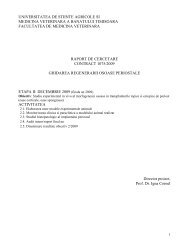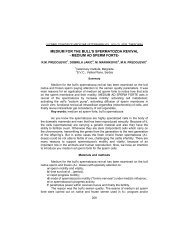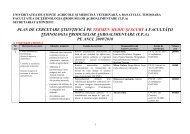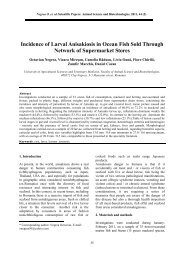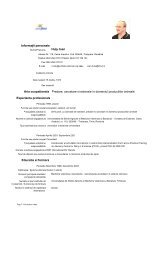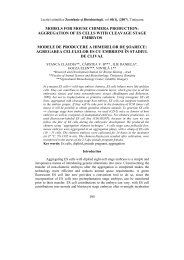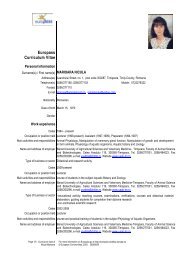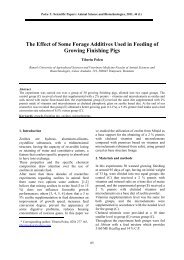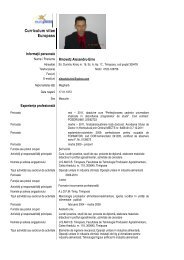journal of linguistic studies
journal of linguistic studies
journal of linguistic studies
You also want an ePaper? Increase the reach of your titles
YUMPU automatically turns print PDFs into web optimized ePapers that Google loves.
(7) (B 9) INTERVIEWER: Prime minister, welcome to EuroNews. It’s your<br />
first overseas visit as Ukrainian prime minister. Does it symbolise your country’s<br />
desire to integrate in Europe?<br />
TIMOCHENKO: Absolutely, …<br />
Thanking in those situations becomes anachronous, but the adjacency pair is still<br />
sometimes realised after an insertion sequence:<br />
(8) (B 11) INTERVIEWER: Minister welcome to EuroNews, what do you feel<br />
are the priorities <strong>of</strong> the French presidency…in terms <strong>of</strong> European policy and do<br />
you feel the Treaty <strong>of</strong> Lisbon will be ratified?<br />
JOUYET: Hello, firstly, thank you for inviting me onto EuroNews, it is an<br />
important European channel.<br />
The interviewer greets the interviewee in 63.63% <strong>of</strong> the cases (an incomplete<br />
adjacency pair is realised), whereas complete pairs are accomplished in 36.36% <strong>of</strong> all<br />
interviews.<br />
Apart from these moves, the structure <strong>of</strong> a political interview opening can incorporate<br />
a number <strong>of</strong> optional, i.e. facultative elements, such as: the interviewer introduction,<br />
greeting the audience and presenting the topics for the rest <strong>of</strong> the show (in cases where<br />
the interview in question is just a part <strong>of</strong> the show). These elements measure a very low<br />
incidence and therefore will not be analysed in this paper.<br />
3.2 AMERICAN DATA<br />
The analysis <strong>of</strong> the openings <strong>of</strong> the American political interviews pointed to two<br />
patterns. The first <strong>of</strong> these is a simple model which consists <strong>of</strong> one move only:<br />
Move: Implicit interviewee introduction.<br />
The implicit introduction <strong>of</strong> the interviewee is used in the cases when the politicians<br />
interviewed are very famous, so that introducing them would be unnecessary:<br />
(10) (A 1) INTERVIEWER: Senator, are you relieved to know finally who<br />
you’re going to run against?<br />
In the example 10, the <strong>journal</strong>ist is introducing the presidential candidate McCain by<br />
employing a vocative which addresses his function. This type <strong>of</strong> vocative is not used<br />
again until the end <strong>of</strong> the interview in the closing which completes the show. The implicit<br />
introduction <strong>of</strong> the interviewee therefore serves as a boundary marker. The interviewee<br />
introduction is realised in all interviews, except in the interview with George Bush, where<br />
the <strong>journal</strong>ist probably skipped this move having thought it unnecessary. In 50% <strong>of</strong> the<br />
interviews analysed in our corpus, the move is accomplished implicitly, i.e. through the<br />
use <strong>of</strong> vocatives which address the full name or the function <strong>of</strong> the interviewee:<br />
(11) (A 3) INTERVIEWER: Mr. President, do you intend to press your request<br />
to visit the World Trade Centre site in New York?<br />
AHMADINEJAD: Well, it was included in my program.<br />
73



